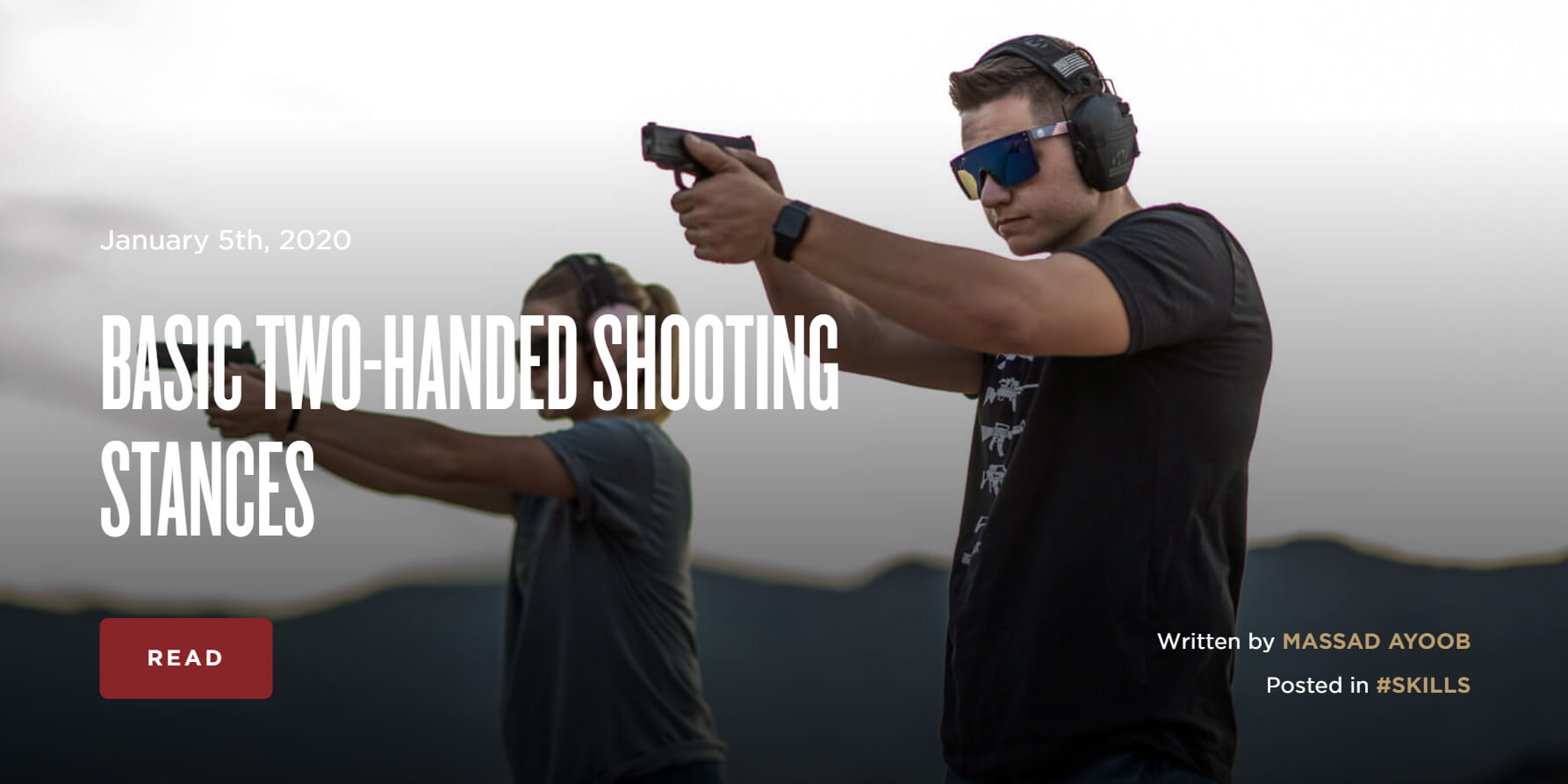I found this video (which is an excerpt from his training DVD series) by D.R. Middlebrooks to have been absolutely fascinating:
I'm relatively new to the shooting sports myself, having started only really in the last part of the last quarter of 2010, so being able to see this history/evolution was really, really interesting to me.

But with the bigger picture?
In-reality, with handguns, "the grip" is the foundation of recoil mitigation. Yes, that recoil will find the weakest link and that energy will try to take its easiest way out with ANY break in the chain between your hands and your feet (where the energy is literally transmitted to the ground) - high-speed video taken with an app like Coach's Eye will show you this in an absolutely unflinching manner, as guys like John "Shrek" McPhee and Joe Weyer will coach you to do in their classes. But if you don't have your that grip set to begin with, your stance is the least of your worries.
Why?
Because you can easily shoot excellent single shots with your grip (and everything else) completely compromised, but with your mission solely on the sights and trigger. Without the limitation of time, one should then be able to shoot a perfect group (which is simply the aggregate of X rounds that are each individually shot perfectly), with absolutely no recoil control whatsoever.
Proof?
I'm fond of citing this little demo by one of my favorite local instructors, Andrew Blubaugh of Apex Shooting and Tactics:
Take note of Andrew's BSA template - specifically, his distance-to-target and the size of his target.
This video is ostensibly about stance, but it shows that, in-reality, the single shot is all about the trigger and the sights.
The universal truth is [ Sight Package ] + [ Trigger Path ] = [ Hit ].
How well you are able to perfectly execute the left side variables in that equation translates directly into the amount of deviation from your POA that prints downrange on the right.
With handguns, we only interact with the gun via our grip, so that's where recoil control begins, and that's where grip really counts. But grip, like stance, is sexy. It sells, and that's why so many focus so much on grip and stance. But knowing that trigger path is much, much more important: knowing just how much you can get away with it is the difference between an experienced shooter, and one who is less so, as in many scenarios, your stance will be variably compromised.
Does this mean that I'm never going to practice getting into a good stance?
Hell no. I'm going to practice a good stance every single chance I get, even when I'm shooting a .22LR.
Why?
Because that is the foundation.
And if I *can* get that good foundation, why
wouldn't I do it? To get that shot, I'll take EVERY advantage I can get, and if getting into a good, stable stance (or other body position) is something that I can cheat and get? Yeah, I'll definitely take it.
I've posted some of these pictures before, at the Handgun Enhancement Clinic run by Chris Cerino - History Channel's
Top Shot's favorite bridesmaid: runner-up in both Seasons 1 and All Stars - in the winter of 2012.
These next two pictures are both from early on that night - notice how far apart my feet are spread. I'm in a black short-sleeve T-shirt and blue jeans, ballcap and OD Howard Leight Impact Sport earmuffs, shooting my full-size XDm9, second lane from the right......
So that's when Cerino came over and gave me some rather uncomfortable loving......



Notice how much closer he made me scoot my feet.
Would you believe he then made me put my feet together for the rest of the night?
Guess how much worse I shot?
Yeah,
no worse (but not any better, either

).
Stance is way on the bottom of that checklist - but it's also the basis of our foundations.
Don't get carried away with it. But don't totally dismiss it, either.



